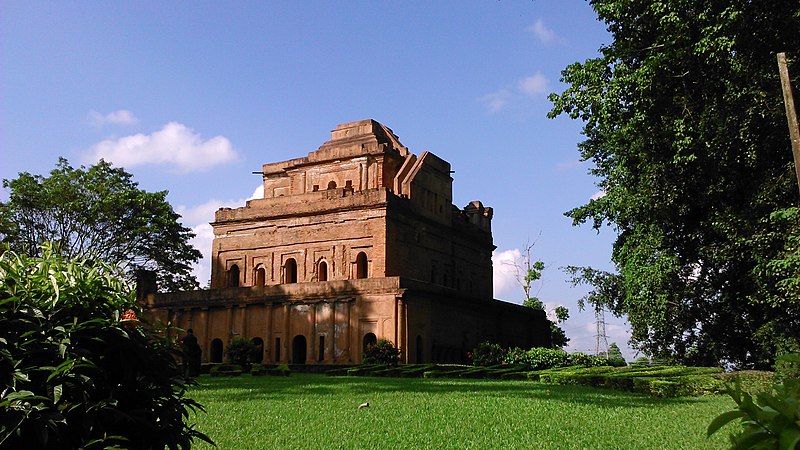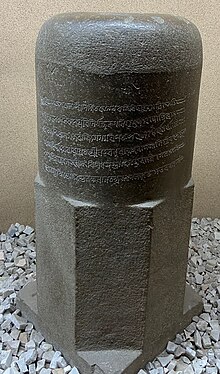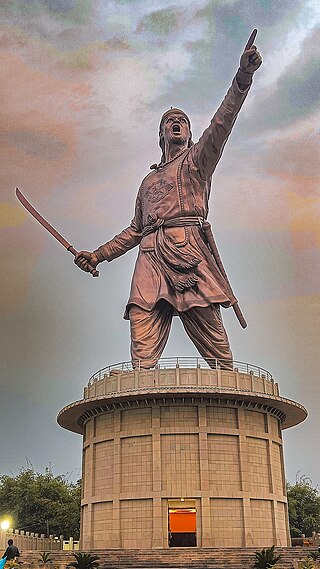The early 17th century Assam was standing at a defining period in her history.
Once a realm of tranquility, the region along the Brahmaputra River was being drawn into a complex power struggle that would last the next 60 years. The rise of Shivaji in Deccan, Guru Tegh Bahadur and later Guru Gobind Singh in the north were already threatening to check Mughal expansion.
It was during the reign of Mughal Emperor Jahangir that the first instigations from the Mughals in the sovereign territories of Ahoms arose.
Here are 5 important battles that happened over the next 6 decades up till the Battle of Saraighat.
1. Battle of Samdhara, 1616 and the Bhomoraguri Rock Inscription
The imperial Mughal eyes were set on the North East from the time of Jahangir. After Kamrup had fallen to Bengal's Mughal governor, Qasim Khan, he wanted to expand further eastward. This brought them into direct confrontation with the then Ahom King, Swargadeo Pratap Singha - one of the most prominent Ahom rulers.
30,000 strong Mughal forces with 700 war elephants were arranged for an expedition into Ahom territories. The misadventure spelt disaster for the invading forces. The casualties on the Mughal side, is estimated to have been around “1,700 men killed on the spot and, in total 5,000 killed. 9,000 men taken captives”, and thousands fled into jungles, fleeing from the defending forces.
In Tezpur, about 23 kilometers from the Koliabhomora bridge (NH 715), one can find the Bhomoraguri rock inscription that was commissioned by the Ahom King, Pratap Singha to mark this grand victory.

2. Battle of Duimunisila, November 1638 and the Treaty of Asurar Ali: Tezpur
With Kamrup coming under the Mughals, the tensions between the Mughals and Ahoms did not cease. The drubbing of the battle of Samdhara was shameful for the mighty Mughals.
After 1616, the hostilities were renewed in 1636. The next clash between the two kingdoms happened in Duimunisila, on the southern banks of Brahmaputra. The battle, yet again, resulted in the victory of the Ahoms, and culminated in the treaty of Asurar Ali of 1638.
In a nutshell, the Ahoms recognized Kamrup as a Mughal domain whereas the Mughals agreed to no longer interfere in the Ahom kingdom.
In 1658, Shah Jahan was ousted and his son, Aurangzeb, took over the reins of the empire. The then Ahom ruler, Swargadeo Jaydhwaj Singha, considering it an opportune moment, threw out the Mughals from Guwahati and pushed them beyond Manas River. Jayadhwaj ventured up till Dhaka, demolished Mughal territories.
3. Fall of Garhgaon and Treaty of Ghilajharighat
After consolidating his power in Delhi, Aurangzeb sent Mir Jumla the Viceroy of Bengal, to invade Assam in January 1662. Mir Jumla attacked the northern and southern banks of Brahmaputra and was able to occupy Garhgaon, the Ahom capital, by March 17, 1662.

Kareng Ghar, the royal Palace of the Ahoms in Garhgaon.
The rulers vacated Garhgaon and King Jayadhwaj Singha had to retreat from his Garhgaon and continue his fight against the Mughals from Namrup.
The Mughal invasion ended with the Treaty of Ghilajharighat. Signed in January 1663, it brought an end to the Mughal occupation of Garhgaon, while giving the Ahom king tributary status. As a part of the treaty, Ahom lost Saraighat to Mir Jumla and Ramani Gabharu, the 6-year old royal princess of Ahom and Jayadhwaj Singha’s only daughter, was to be sent to the Mughal Harem as ransom. These were among many other concessions that the Ahoms had to give.
Aftermath of Treaty of Ghilajharighat
The legendary general Lachit Borphukan was absent at the time of Mir Jumla’s invasion as he had traveled eastwards on another expedition. Having returned, Lachit had immediately made up his mind to reclaim ceded territories. He had set off to get back the princess - however, by then the princess was already in Dacca. Mir Jumla had died shortly after the war.
In 1667, Lachit recovered Guwahati from Mughals as mentioned in the inscription at north Guwahati and Fatasil Ambari. The inscription is 41 inches in height and 53 inches in girth. It is presently preserved in the Assam State Museum in Guwahati.

4. Battle of Alaboi, 1669
The Kachwaha Rajput King, Raja Ram Singh was sent by Aurangzeb to defeat the Ahoms with a large army. Under many compulsions, including his son being in Aurangzeb’s custody, in 1669, Raja Ram Singh arrived with many worries.
The beginning of the Ram Singh campaign proved disastrous for the Ahoms.
Ram Singh issued a provocative challenge: a duel between himself and King Chakradhwaj Singha, to be witnessed by both armies. Impulsive and angered, the Ahom king ordered Lachit Barphukan to accept the challenge. Despite recognizing the ploy, Lachit obeyed his king. The ensuing battle at Alaboi in 1669 ended in a devastating defeat for the Ahoms. Approximately 10,000 Assamese soldiers perished.
The news of this catastrophic loss proved fatal to the already ailing King Chakradhwaj Singha, who succumbed to his illness in 1670.
Swargadeo Chakradhwaja Singha was succeeded by his brother Udayaditya Singha.
5. Battle of Saraighat, 1671 - The final showdown!
While the Battle of Alaboi was disastrous for the Ahoms, it was not conclusive. The Mughal siege still continued and there was no outcome in sight.
In Delhi, Aurangzeb was becoming increasingly impatient and insisted Ram Singh to be on the offensive.
In March 1671, Ram Singh readied his forces for a decisive attack on Guwahati. To bolster their defenses, King Udayaditya Singha dispatched a 20,000-strong army from Samdhara to reinforce the garrison at Saraighat. However, the Ahom war strategy was dealt a severe blow as Lachit Borphukan fell gravely ill and was confined to his sickbed at Itakhuli Fort. He was forced to oversee the battlefield from afar.
As the battle proceeded, the Mughals were pressing through Saraighat moving ahead, and the Ahom naval vessels and armies were retreating. It was under such conditions that Lachit left his bed and joined his armies despite extremely poor health!
Despite his illness, Lachit displayed extraordinary courage and leadership. Boarding a warship, he initiated a counterattack against the Mughal fleet, using artillery to devastating effect. The sight of their ailing commander leading the charge inspired the Ahom soldiers. Lachit's small force rapidly grew as more Ahom warships joined the battle, converging on the Mughal fleet.
The Mughals suffered the loss of three top-ranking amirs and 4,000 soldiers.
The Aftermath
Saraighat turned out to be the graveyard for the invading Mughal forces.
Lachit unfortunately did not live long after the battle. He died in Kaliabar in April 1672. Lachit’s remains were laid in the Lachit Borphukan Maidam by Swargadeo Udayaditya Singha. It is located at Gohain gaon. It is 8 km from the Gibbon Wildlife Sanctuary.

Conclusion

As of the writing of this article, the Moidams of Ahoms have just been declared as a UNESCO world heritage site as well!
The spectacular achievements of the Ahom dynasty, the cultural, martial, architectural achievements keep reminding India of her rich history. Though, since many Ahom structures, as suited the times, were of semi-permanent materials have not survived the vagaries of time. However, their legacy continues to inspire Indians even today.
(The author is a technologist and the Founder of Pathbeat.in, a web portal researching and promoting tourist destinations across India)



